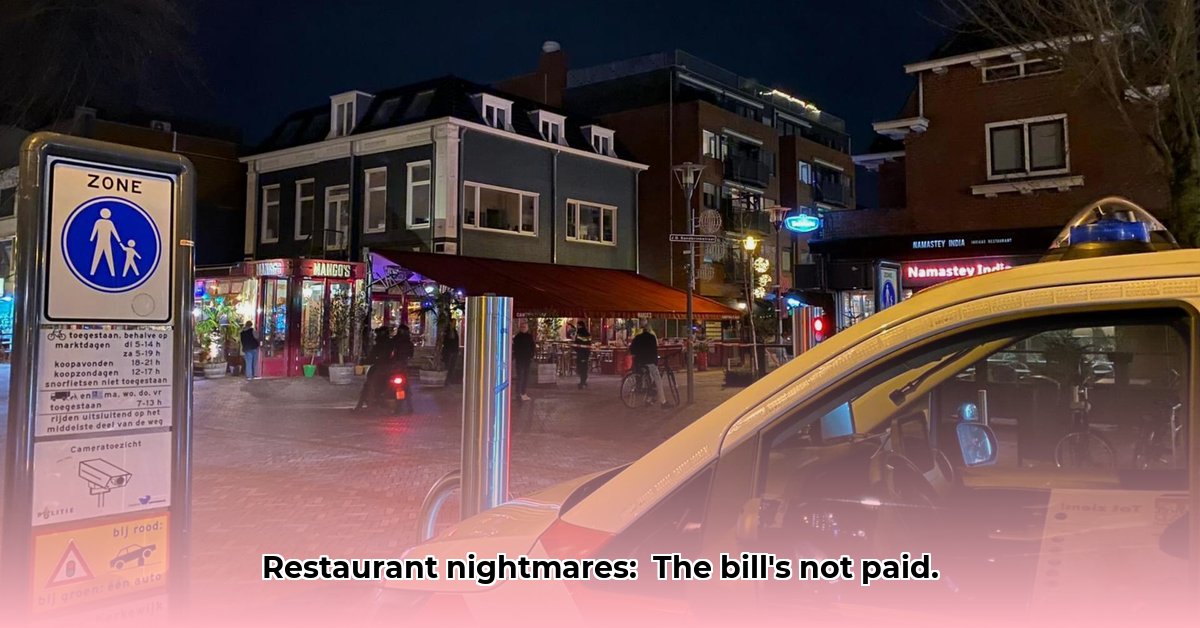
Protecting Your Restaurant from Dine-and-Dashers
Dealing with customers who skip out on their bill – those frustrating "eetpiraten" (dine-and-dashers) – is a common challenge for South African restaurants. However, it doesn't have to cripple your business. This guide provides practical, actionable steps to minimise this problem, creating a safer and more profitable environment.
Understanding the "Eetpiraat": Beyond a Simple Oversight
Identifying "food pirates" isn't always straightforward. They might blend in with regular customers, employing subtle tactics to avoid payment. The goal isn't to unfairly target patrons, but to implement proactive measures that protect your business. While some might be opportunistic, others are deliberate fraudsters. It's crucial to approach this as a business issue, not a moral judgment. Remember, a proactive approach is your best defence.
Preventing Dine-and-Dash: Proactive Measures for a Safer Restaurant
Invest in Comprehensive Staff Training: A well-trained staff is your first line of defence. Train your team to recognise subtle signs of potential problems, such as unusually large orders followed by hasty departures, unusually disruptive behaviour, or evasiveness when questioned about payment. Role-playing scenarios can significantly enhance their ability to identify and address potential issues.
Implement Crystal-Clear Policies: Ensure that your pricing and payment policies are clearly displayed and easily understood. Ambiguity breeds disputes. A prominent sign outlining payment options (cash, card) and stating that "Payment is expected upon completion of service" acts as a deterrent. Consider adding a section regarding refusal of service for disruptive behaviour.
Strategic Table Management for Large Groups: For larger groups, consider requiring a pre-payment or credit card authorisation to secure their booking. This not only reduces the risk of no-shows but also mitigates the financial impact of a large unpaid bill. This method is particularly useful for high-value bookings and events.
Upgrade Your Point of Sale (POS) System: Modern POS systems offer valuable features such as flagging unusual transaction patterns and providing real-time alerts to staff. This proactive alert system can significantly reduce the chance of a successful dine-and-dash.
Catching and Handling Incidents: Responding Effectively
Utilize CCTV Surveillance: Strategically placed CCTV cameras act as a powerful deterrent and provide crucial evidence if an incident occurs. Ensure cameras cover high-risk areas and clearly display signage indicating surveillance. Regular maintenance is vital to ensure optimal functionality.
Empower Your Staff with De-escalation Training: Train staff to handle potential incidents calmly and professionally. De-escalation techniques can prevent confrontations and stressful situations. Establish clear protocols for staff to follow when suspicious activity is observed.
Maintain Meticulous Records: Thoroughly document every incident, including the time, descriptions of individuals involved, and witness statements. Detailed records are essential for insurance claims and potential legal action.
Foster Strong Relationships with Law Enforcement: Establish a good working relationship with your local police station. Knowing who to contact and the appropriate procedures to follow streamlines the process should legal action become necessary.
Recouping Losses: Post-Incident Procedures
While prevention is paramount, losses can still occur.
Engage Professional Debt Collection Services: Debt collection agencies possess the expertise and resources to pursue outstanding payments more effectively than you would independently.
Consider Legal Action (Last Resort): Consult a lawyer to understand your legal options. Legal action should be considered a last resort due to its inherent complexities and costs.
Leveraging Technology: Data-Driven Risk Mitigation
Advanced analytics within your POS system or from third-party solutions can highlight trends in non-payment incidents. This data-driven approach allows for more efficient resource allocation and the development of targeted prevention strategies.
Risk Assessment: Prioritising Your Actions
Effective risk mitigation requires a prioritised approach. The table below highlights various strategies and their potential impact:
| Strategy | Likelihood of Success | Impact of Failure | Mitigation Strategies |
|---|---|---|---|
| Staff Training | High | Medium | Regular refresher courses, role-playing, clear guidelines |
| Enhanced POS Systems | High | Low | System updates, staff training on new features, regular checks |
| CCTV Surveillance | Medium | Medium | Regular maintenance, strategic placement, clear signage |
| Data Analytics | Medium | Low | Access to skilled analyst, sufficient data volume, regular reviews |
| Legal Recourse | Low | High | Strong legal representation, detailed records of incidents |
By adopting this comprehensive approach, you can significantly reduce dine-and-dash incidents, creating a safer and more profitable restaurant. Remember, a proactive attitude is your best defence.